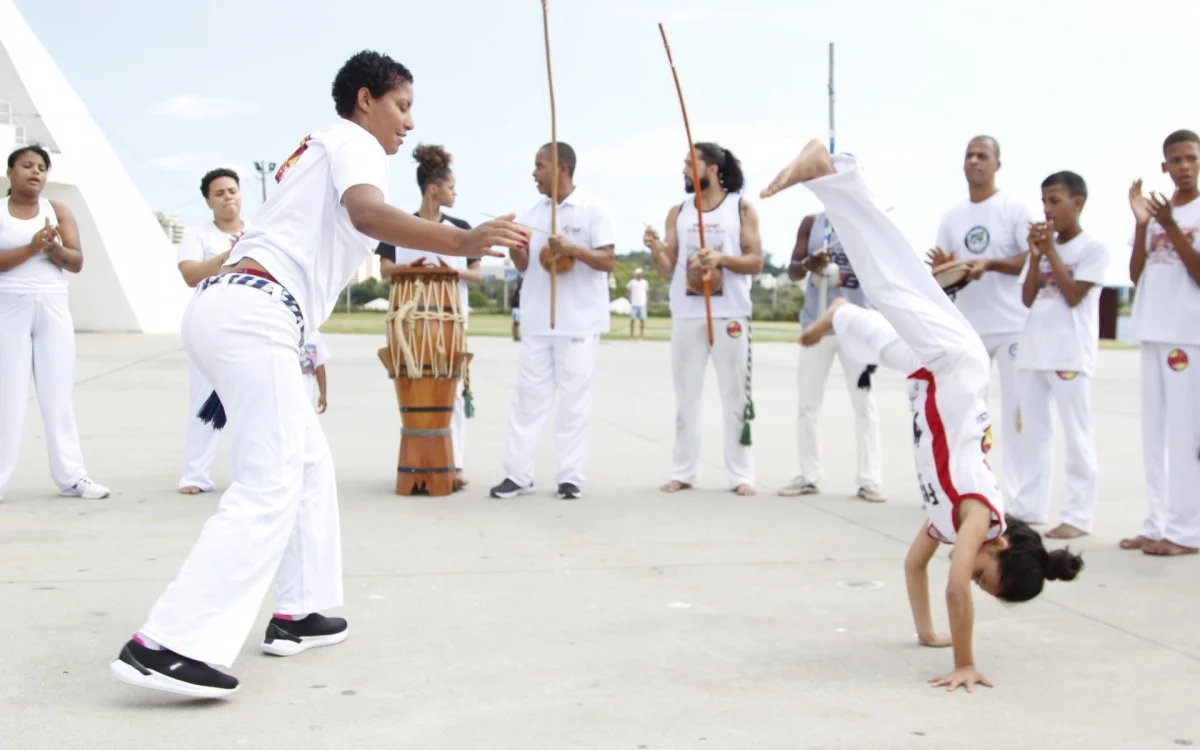
Capoeira, an Afro-Brazilian martial art form, has been captivating people with its grace, athleticism, and rich cultural history for centuries. With origins rooted in the slave trade, Capoeira has evolved into a dynamic blend of martial arts, dance, acrobatics, and music. The combination of smooth, fluid movements and energetic rhythms creates a mesmerizing spectacle that leaves spectators speechless.
In this article, we will delve into the fascinating world of Capoeira and uncover 17 unbelievable facts about this unique practice. From its clandestine beginnings to its global recognition as an art form, Capoeira has a story unlike any other martial art. Get ready to be amazed as we explore the surprising facts and hidden gems of Capoeira.
Key Takeaways:
- Capoeira is a dynamic martial art that originated in Brazil, blending dance, acrobatics, and music. It promotes cultural inclusivity and creativity, captivating people of all ages and backgrounds worldwide.
- Capoeira’s rich history dates back to the 16th century, when it was used as a form of self-defense by enslaved Africans. It has evolved into a powerful workout, a social activism tool, and a vibrant global phenomenon.
Capoeira originated in Brazil during the 16th century.
During the time of slavery in Brazil, enslaved Africans developed Capoeira as a form of self-defense disguised as a dance. It allowed them to train without arousing suspicion from their captors.
Capoeira was banned in Brazil in the 1800s.
Due to its association with rebellion and resistance, Capoeira was outlawed in Brazil throughout the 19th century. Practitioners faced severe punishment if caught engaging in the art form.
Capoeira incorporates various kicks, flips, and spins.
The acrobatic movements of Capoeira are breathtaking to witness. Participants execute impressive kicks, handstands, cartwheels, and even backflips, displaying incredible agility and control.
Capoeira combines martial arts with music and rhythm.
Music plays a crucial role in Capoeira. Every session is accompanied by instruments such as the berimbau, pandeiro, and atabaque. The music sets the pace and energy of the game, known as a “roda.
Capoeira was recognized as an intangible cultural heritage by UNESCO.
In 2014, Capoeira was inscribed on UNESCO’s Representative List of the Intangible Cultural Heritage of Humanity, highlighting its significance and cultural value.
Capoeira can be played both as a game and as a martial art.
Capoeira can be performed in a non-competitive manner, focusing on the artistry and flow of movements. However, it can also be practiced as a combat sport, with participants aiming to outmaneuver and strike their opponents.
Capoeira promotes self-expression and creativity.
As a highly improvisational martial art, Capoeira encourages practitioners to express themselves through movement and music, fostering individuality and creativity.
Capoeira is practiced by people of all ages.
Capoeira is not limited by age. It is practiced by children, adults, and even the elderly, making it a versatile martial art accessible to people from all walks of life.
Capoeira schools are called “academies” or “capoeira groups”.
To learn and train in Capoeira, individuals join academies or Capoeira groups led by experienced instructors, known as “mestres. These groups often become tight-knit communities.
Capoeira has different styles and regional variations.
Various styles of Capoeira have emerged over time, each influenced by different regions and cultural backgrounds. Some popular styles include Angola, Regional, and Contemporânea.
The Capoeira roda signifies a sacred space.
The roda represents a sacred circle, a space where Capoeira is practiced and respected. Participants engage in a friendly exchange, challenging each other’s skills and displaying sportsmanship.
Capoeira movements are named after animals.
Many movements in Capoeira are inspired by animal behavior and are named accordingly. Examples include the ginga (monkey-like movement), the macaco (monkey), and the queda de rins (crab-like stance).
Capoeira can be a powerful workout.
The physically demanding nature of Capoeira makes it a fantastic full-body exercise. Practitioners develop strength, flexibility, coordination, and cardiovascular endurance through its dynamic movements.
Capoeira promotes cultural inclusivity.
Capoeira transcends borders and embraces diversity. It welcomes individuals from different cultural backgrounds, fostering an inclusive and multicultural community.
Capoeira has become popular in the world of cinema.
Capoeira’s unique blend of martial arts, dance, and acrobatics has caught the attention of filmmakers. It has been featured in movies like “Only the Strong” and “Besouro”, showcasing its beauty and power on the big screen.
Capoeira can be a form of social activism.
Capoeira serves as a tool for empowerment, social justice, and community engagement. It has been used to promote positive change and tackle social issues in various parts of the world.
Capoeira continues to evolve and thrive worldwide.
From its humble beginnings in Brazil, Capoeira has spread across the globe, captivating people of all backgrounds. Today, it remains a vibrant and ever-evolving martial art that continues to inspire and captivate.
Conclusion
In conclusion, Capoeira is a fascinating martial art that combines elements of dance, acrobatics, and music. It originated in Brazil and has now gained popularity worldwide. Its unique blend of physicality, artistry, and cultural significance makes it truly remarkable.Capoeira not only provides a great workout, but it also allows practitioners to develop discipline, strength, flexibility, and coordination. The rhythmic movements and music create an immersive experience that engages both the body and the mind.Whether you’re interested in martial arts, dance, or simply exploring new cultural experiences, Capoeira is definitely worth delving into. It’s an incredible way to stay active, learn about Brazilian culture, and challenge yourself physically and mentally. So let the rhythm guide you and embark on a journey discovering the wonder of Capoeira.
FAQs
1. What is Capoeira?
Capoeira is a Brazilian martial art that incorporates elements of dance, acrobatics, and music. It originated in the 16th century during the time of slavery in Brazil as a means for enslaved Africans to defend themselves.
2. Do I need any prior experience to practice Capoeira?
No, you don’t need any prior experience to practice Capoeira. It welcomes people of all ages and fitness levels. Beginners are often introduced to the basic movements and gradually progress as they gain familiarity and skill.
3. Is Capoeira physically demanding?
Yes, Capoeira is physically demanding as it involves a combination of strength, flexibility, and agility. It requires participants to perform complex movements, kicks, and acrobatics. However, you can start at your own pace and gradually build up your fitness level.
4. Is Capoeira suitable for children?
Yes, Capoeira is suitable for children. It provides a fun and interactive way for them to stay active while also developing discipline, coordination, and social skills.
5. Are there any health benefits of practicing Capoeira?
Absolutely! Capoeira offers numerous health benefits, including improved cardiovascular fitness, increased strength and flexibility, enhanced coordination, and stress relief.
6. Can I practice Capoeira alone?
While Capoeira is traditionally practiced in a group setting, you can practice certain movements and sequences on your own. However, to fully experience the cultural aspects and engage in partner interactions, it is recommended to join a Capoeira group or class.
7. Where can I find a Capoeira class or group?
Capoeira classes and groups are often found in fitness centers, martial arts studios, or cultural centers. You can search online or ask local community organizations for recommendations in your area.
Was this page helpful?
Our commitment to delivering trustworthy and engaging content is at the heart of what we do. Each fact on our site is contributed by real users like you, bringing a wealth of diverse insights and information. To ensure the highest standards of accuracy and reliability, our dedicated editors meticulously review each submission. This process guarantees that the facts we share are not only fascinating but also credible. Trust in our commitment to quality and authenticity as you explore and learn with us.


